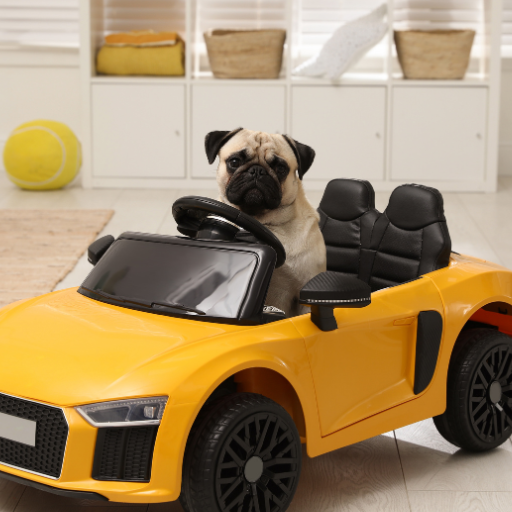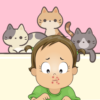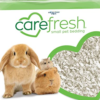Unveiling the Complexity of Pugs
Pugs, with their bulging eyes and scrunched-up faces, hold a unique position in the canine world. The dichotomy of these creatures is puzzling; their owners are often caught between moments of intense affection and occasional annoyance. This deep dive into the world of Pugs aims to explore the spectrum of their behaviors, with a particular emphasis on those aspects that some might find challenging.

Reasons Why People Find Pugs Annoying:
- Constant Need for Attention: Pugs are companion dogs and require regular social interaction. They can become clingy and exhibit signs of separation anxiety when left alone. For some pet owners who have other obligations such as work or school, this constant demand for attention can be overwhelming.
- Stubbornness: Pugs are known for their strong-willed nature. This trait, while often endearing, can become frustrating during training sessions or when trying to establish routines. Some owners may struggle with this stubbornness, leading to potential behavioral issues.
- Loud Breathing and Snoring: The unique facial structure of a pug can lead to Brachycephalic Syndrome, which often results in loud, labored breathing and snoring. These sounds can become a constant presence in a pug owner’s life, which some individuals might find disruptive, especially during sleep or quiet times.
- Shedding: Despite their short hair, pugs are known for their shedding. Owners may find themselves constantly cleaning up after their pet, which can be a significant source of annoyance. The omnipresent pug hair can adhere to furniture, clothing, and can even find its way into meals.
- Health Issues: Pugs are prone to various health issues such as eye problems, skin conditions, and respiratory difficulties. The frequent vet visits and potential anxiety about their pug’s health can become a source of stress for some owners.
- Activity Levels: Pugs are energetic dogs, often exhibiting bursts of hyperactivity known as ‘zoomies’. While these bouts of energy can be amusing, they can also result in disruptive behavior. For owners seeking a calm, quiet pet, this characteristic of pugs may be problematic.
- Food Motivation: Pugs are highly food-motivated, which can result in overeating and subsequent obesity if not properly managed. This constant vigilance over diet can be a source of annoyance for some owners.
Tracing Pug Traits and Tendencies
A Pedigree With a Purpose
From being adored by Chinese emperors to being painted by European nobles, Pugs have a history steeped in love and adulation. They were bred to keep laps warm and hearts cheerful, instilling in them an innate need for companionship. This desire for constant affection can sometimes border on clinginess, a trait that busy pet parents might find annoying.
A Personality That Packs a Punch
Don’t let their size fool you! Pugs carry an avalanche of emotions and energy within their compact bodies. Their playful antics can lighten up a room, but their obstinate nature might raise a few eyebrows. Some owners describe the experience of training Pugs as a roller coaster ride—thrilling, unpredictable, and at times, frustrating.
The Downside of Selective Breeding
The very characteristics that make Pugs endearing are often the cause of their health problems. Their adorable squished faces can lead to Brachycephalic Syndrome, causing breathing difficulties. This can result in loud, laborious snorting sounds, an auditory experience that is not everyone’s cup of tea. Furthermore, the frequent veterinary care these issues necessitate can be stressful for pet owners.
The Pug Paradox: Quirky and Exasperating Habits
A Never-Ending Quest for Attention
Pugs are social butterflies, eager to please and desperate for affection. They crave interaction and can become despondent when left alone. This incessant need for attention can be exhausting for owners, especially those seeking a low-maintenance pet.
A Symphony of Snorts
Whether it’s their snores resonating through the quiet of the night or their snorts punctuating the silence of a lazy afternoon, Pugs never fail to make their presence heard. While some might find these sounds endearing, others consider it a constant cacophony, disrupting their peace.
The Battle of Wills: Training a Pug
A stubborn streak runs deep within Pugs. They have a mind of their own and won’t hesitate to show it, especially during training sessions. Pet parents need to bring out their A-game of patience and consistency to make any headway. However, it’s not uncommon for owners to feel outwitted by these crafty canines.
Underneath the Fur: Dealing With Pug Shedding
For short-haired dogs, Pugs shed an astonishing amount. Owners often joke about having a second pet made entirely of Pug hair! This persistent shedding can lead to an ever-present layer of fur on clothing, furniture, and even in meals—a living situation not everyone finds appealing.
The Juggling Act of Living With Pugs
Adapting to a Pug-Centric Lifestyle
When a Pug enters your life, it often demands a shift in lifestyle. Balancing their need for attention, their exercise requirements, and their incessant shedding can turn an otherwise peaceful household upside down. Individuals seeking a calm and orderly life may find this upheaval overwhelming.
Patience and Pugs: A Tale of Love and Frustration
The journey of training a Pug is paved with moments of joy and exasperation. Their stubbornness can be challenging, and their antics can disrupt the most meticulously planned training sessions. Even seasoned trainers admit that Pugs require an extra dose of patience and perseverance.
Pug Health: A Constant Concern
Owners often find themselves entangled in managing the various health issues Pugs are predisposed to. Regular vet visits, dietary monitoring, and skin care routines can feel like a full-time job. This constant need for vigilance can be emotionally draining, casting a shadow over the joys of pet ownership.
Making Peace With the Noise
The perpetual soundtrack of snorting and grunting that accompanies Pug ownership can prove grating for some. Desperate for moments of silence, some owners resort to noise-canceling headphones, a testament to the sonic challenge a Pug presents.
Seeing the Silver Lining: Embracing Pug Eccentricities
Personality Plus: The Charismatic Pug
Their quirks notwithstanding, Pugs bring unparalleled charm to the table. They’re vivacious, mischievous, and their zest for life is infectious. Despite the chaos, they bring bouts of laughter and moments of pure affection that many owners wouldn’t trade for the world.
Unwavering Loyalty: The Pug Promise
Pugs might be a handful, but they are second to none when it comes to loyalty. Their unwavering devotion and boundless affection for their owners provide a form of emotional support that, for many, outweighs their demanding nature.
The Life of the Party: Pugs in Social Circles
Pugs are extroverts in a small package. Their love for social gatherings, be it a park full of dogs or a house full of guests, adds a unique vibrancy to any setting. Their sociability can turn any mundane day into a delightful spectacle.
- Can Dogs Eat Injera? [Advice]
- Can Lighter Fluid Kill a Dog? [Advice]
- Why Is My Dog Afraid of Flies? [Guide]
Final Thoughts: The Rollercoaster of Pug Ownership
Pug ownership is a complex affair—a blend of joys, challenges, laughter, and the occasional bout of frustration. Yes, Pugs can be demanding, their habits can sometimes be exasperating, and their health concerns can cause worry. Yet, for those who’ve opened their hearts to these quirky canines, the experience is nothing short of extraordinary. After all, life with a Pug is never boring!

Doctor of Veterinary Medicine (D.V.M.) at Nation Taiwan University,Master of Science (M.S.) in Biomedical Engineering at National Taiwan University of Science and Technology




